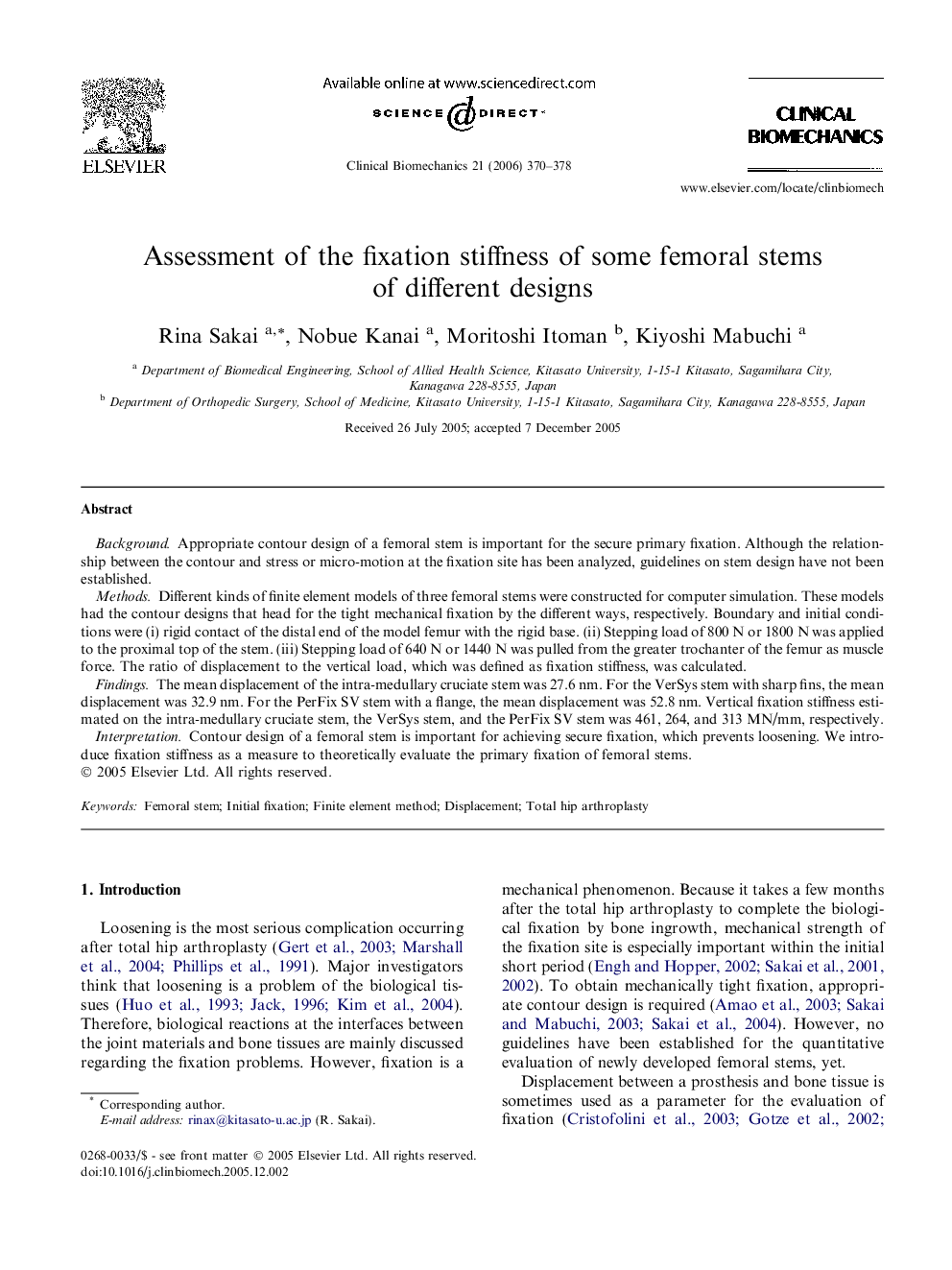| Article ID | Journal | Published Year | Pages | File Type |
|---|---|---|---|---|
| 4051602 | Clinical Biomechanics | 2006 | 9 Pages |
BackgroundAppropriate contour design of a femoral stem is important for the secure primary fixation. Although the relationship between the contour and stress or micro-motion at the fixation site has been analyzed, guidelines on stem design have not been established.MethodsDifferent kinds of finite element models of three femoral stems were constructed for computer simulation. These models had the contour designs that head for the tight mechanical fixation by the different ways, respectively. Boundary and initial conditions were (i) rigid contact of the distal end of the model femur with the rigid base. (ii) Stepping load of 800 N or 1800 N was applied to the proximal top of the stem. (iii) Stepping load of 640 N or 1440 N was pulled from the greater trochanter of the femur as muscle force. The ratio of displacement to the vertical load, which was defined as fixation stiffness, was calculated.FindingsThe mean displacement of the intra-medullary cruciate stem was 27.6 nm. For the VerSys stem with sharp fins, the mean displacement was 32.9 nm. For the PerFix SV stem with a flange, the mean displacement was 52.8 nm. Vertical fixation stiffness estimated on the intra-medullary cruciate stem, the VerSys stem, and the PerFix SV stem was 461, 264, and 313 MN/mm, respectively.InterpretationContour design of a femoral stem is important for achieving secure fixation, which prevents loosening. We introduce fixation stiffness as a measure to theoretically evaluate the primary fixation of femoral stems.
